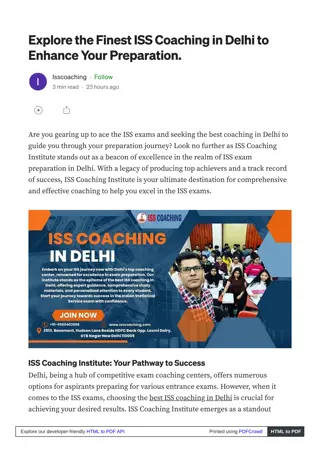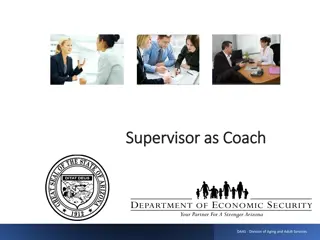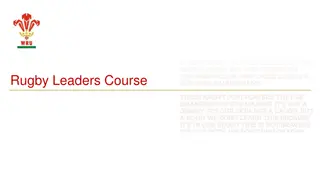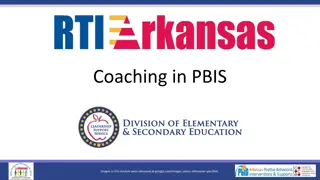
Tech Inc. Student Coaching Slides: Analyzing Income Data & Hypothesis Testing
Enhance your data analysis skills with the Future Super Tech Inc. student coaching slides. Explore histograms, sample statistics, hypothesis testing steps, income variation, and more. Learn how to determine the proportion of citizens with disposable incomes over $1,000, calculate poverty levels, and interpret statistical results. Dive deep into Excel tools for descriptive statistics and hypothesis testing to sharpen your analytical abilities.
Download Presentation

Please find below an Image/Link to download the presentation.
The content on the website is provided AS IS for your information and personal use only. It may not be sold, licensed, or shared on other websites without obtaining consent from the author. If you encounter any issues during the download, it is possible that the publisher has removed the file from their server.
You are allowed to download the files provided on this website for personal or commercial use, subject to the condition that they are used lawfully. All files are the property of their respective owners.
The content on the website is provided AS IS for your information and personal use only. It may not be sold, licensed, or shared on other websites without obtaining consent from the author.
E N D
Presentation Transcript
Future Super Tech Inc. Student Coaching Slides
Question 1A & 1B: Histogram See Gateway web site for Excel steps Use tools/data analysis/histogram What proportion of Country X citizens have disposable incomes > $1,000 per month? Approximate answer is ok here.
Question 1C: Sample statistics See web site for Excel steps Use tools/data analysis/descriptive statistics/summary statistics Mean: first line Standard deviation: fifth line
Question 1D: Hypothesis Testing Step 1: Ho: Null hypothesis = Country X s claim Step 2: H1or Ha: Alternative hypothesis = Country Y s claim (a) If Country Y wins the debate only when the population mean is less than $1,000, H1 should be one-tail (b) Otherwise, H1should be two-tail
Hypothesis Testing (continued) Step 3: Critical Value (a) Determine which statistical table to use (b) If H1is one-tail, put .05 in tail; if H1is 2- tail, put .025 in each tail Step 4: Test Statistic = Sample Statistic (a) Use sample mean and standard deviation from Question 1c (b) Use standard error of the mean
Hypothesis Testing (continued) Step 5: Conclusion (a) If sample statistic (absolute value) exceeds critical value, reject Ho (b) Otherwise, do not reject Ho
Question 2A: Income Variation Standard deviation measures variation If standard deviation = 0, no variation, so each person has same income High standard deviation implies high variation
Question 2B: Poverty Level Use Z table (normal area table) Use standard deviation, NOT standard error since this is not a sampling distribution problem Question 2B has 2 calculations, one for Country X and the other for Country Y
Question 2B: Skewed Distribution If mean > median, distribution is skewed Do you think mean > median for income? Use normal table only if distribution is bell shaped Bell shaped only if symmetric Symmetric only if not skewed
Question 3: Hypothesis Testing Ho: Population proportion = 1/3 (Amnesty International s claim) Normal approximation to binomial H1is one-tail if Minister of Commerce wins debate only when proportion is less than 1/3. Otherwise, it is two-tail Sample proportion = number of political prisoners/sample size
Questions 4 and 5: Factors Determining GDP/Capita Physical Capital Human Capital Level of Technology Efficiency
Question 5: Ethical Considerations Who benefits and who loses from the firm s decision? Who does the firm have a responsibility to? What are those responsibilities?






















